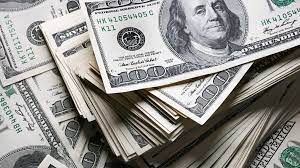
Traders and stock buyers want to see a jobs report that shows the labor market is cooling at a gentle pace, so the Federal Reserve feels it can consider cutting interest rates. They want to see a furthering of the November rally that saw the S&P 500 SPX up 8.9%.
What investors don’t want to see is a robust NFP report with accelerating wage growth that may bolster inflationary pressures, in effect keeping the Fed’s rates high for longer. Neither desired is a really bad reading that suggests if the central bank does have to cut borrowing costs it’s because the economy is falling out of bed with a bump.
One of Wall Street’s biggest bulls thinks the market can navigate that middle ground. Fundstrat’s head of research Tom Lee says the S&P 500 can reach 5,200 by the end of next year as falling inflation sees interest rates move lower, while the economy “probably” avoids a recession.
Lee’s antithesis is JPMorgan’s chief market strategist Marko Kolanovic, who’s been bearish on stocks for much of the year. He agrees with Lee that interest rates will likely fall in 2024 as the economy slows — the 10-year Treasury yield may fall to 3.75%, he reckons — but he warns it will reflect a scenario that is bad for equities.
“Should investors and risky assets welcome an inflation decline and bid up bonds and stocks, or will the fall in inflation indicate that the economy is sliding towards a recession? We think that the decline in inflation and economic activity that we forecast for 2024 will at some point make investors worry or perhaps even panic,” he told clients in a note on Thursday.
The damage done to the economy by the Fed’s rate hiking campaign is starting to show up, says Kolanovic, with the market too complacent amid a backdrop of declining consumer strength and increased credit stress.
In essence, Kolanovic reckons that stocks and other risk assets won’t be able to maintain a bullish run without substantial interest-rate cuts by central banks, and that is only likely to occur if markets fall substantially or the economy falls sharply.
“This is a catch 22 situation, in which risk assets can’t have a sustainable rally at this level of monetary restriction, and there will likely be no decisive easing unless risky assets correct (or inflation declines due to, for example, weaker demand, thus hurting corporate profits),” says Kolanovic.
“Overall, we are not positive on the performance of risky assets and the broader macro outlook over the next 12 months,” he adds. As risk appetite fails, currency carry trades may be reversed (witness the recent rebound in the Japanese yen (USDJPY)) while precious metals (GC00) have structural tailwinds and would benefit from a risk-off sentiment and subsequent easing of monetary policy.
In summary, Kolanovic says investors should choose cash or bonds over stocks, which are trading on earnings multiples that are too high. “In a very optimistic economic scenario, we can see equities outperforming bonds (or cash) by about 5%, while in a likely environment of declining growth or a recession, they could underperform cash by about 20%.”
The November nonfarm payrolls report will be released at 8:30 a.m. Eastern. Economists expect a net 190,000 jobs were created last month, up from 150,000 in October. The unemployment rate is forecast to stay the same at 3.9%, and average hourly wages to have grown by 0.3%, up from 0.2%.
Other U.S. economic data due on Friday includes the preliminary reading on December consumer spending, due at 10 a.m.
(Copyright 2023 WBAP/KLIF 24/7 News. All rights reserved. Contains material from the Associated Press.)




